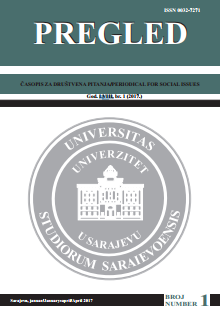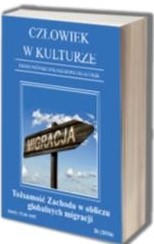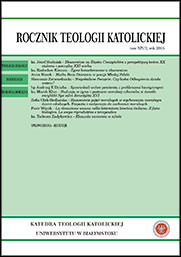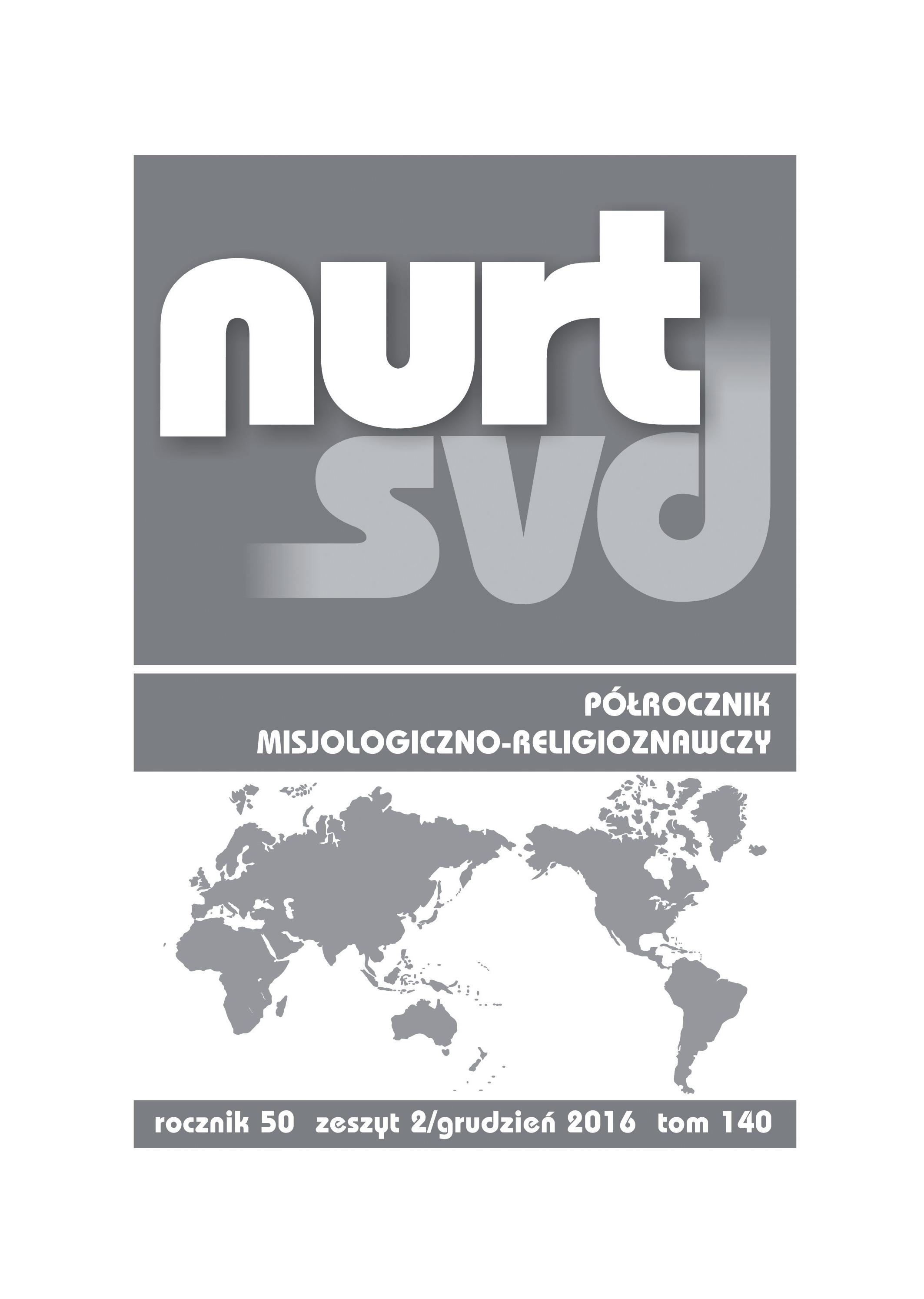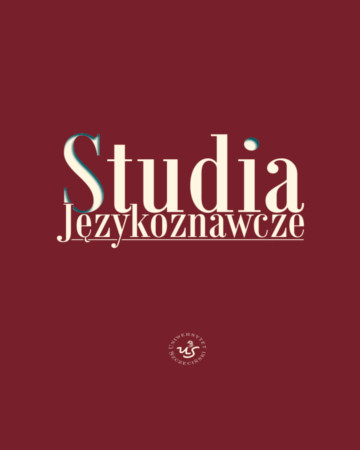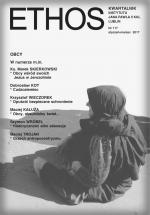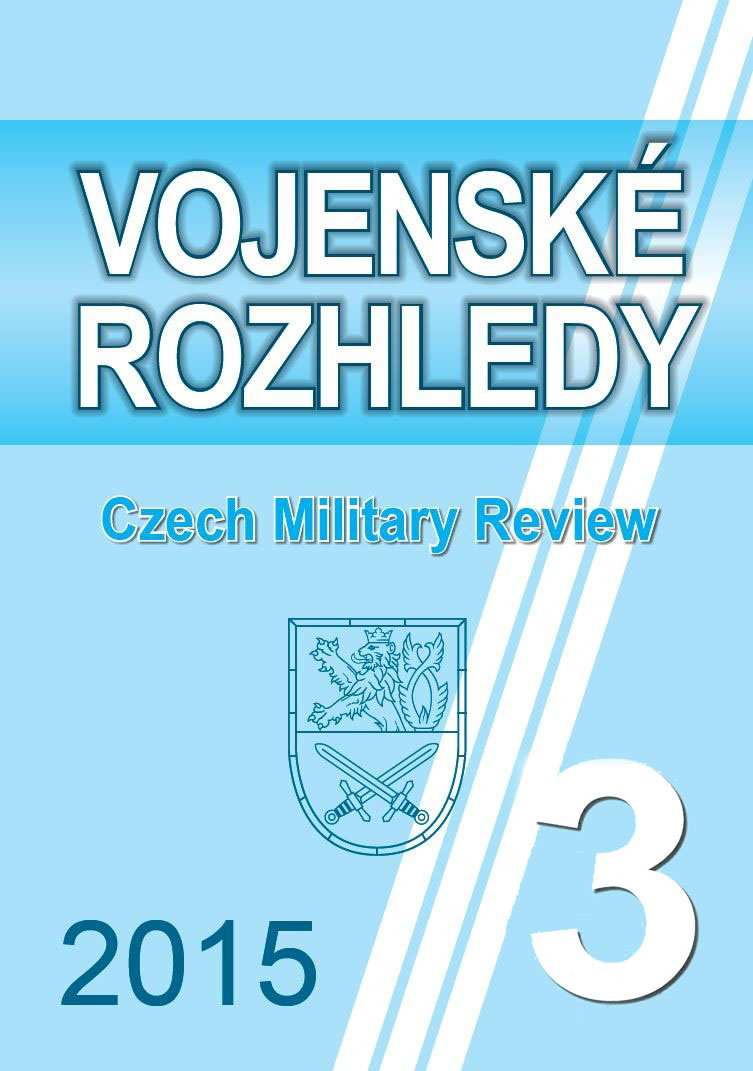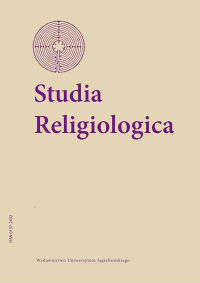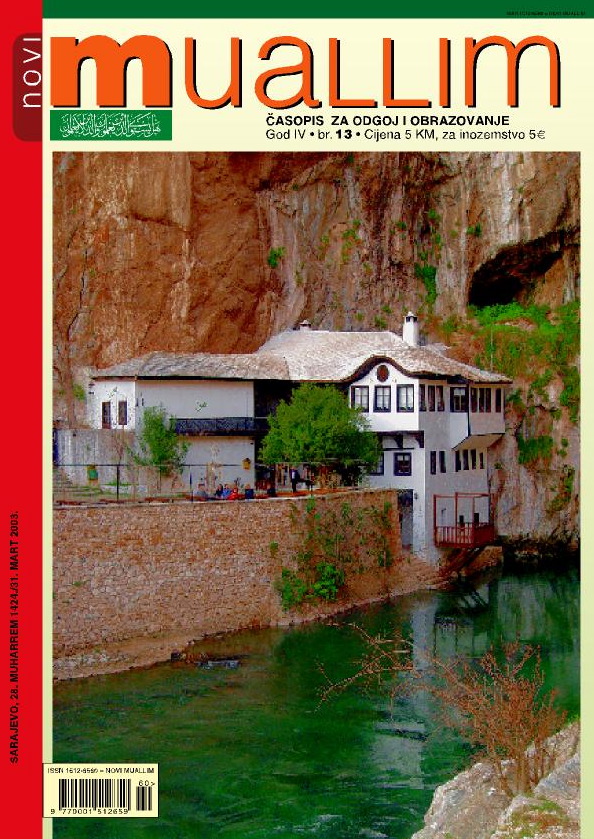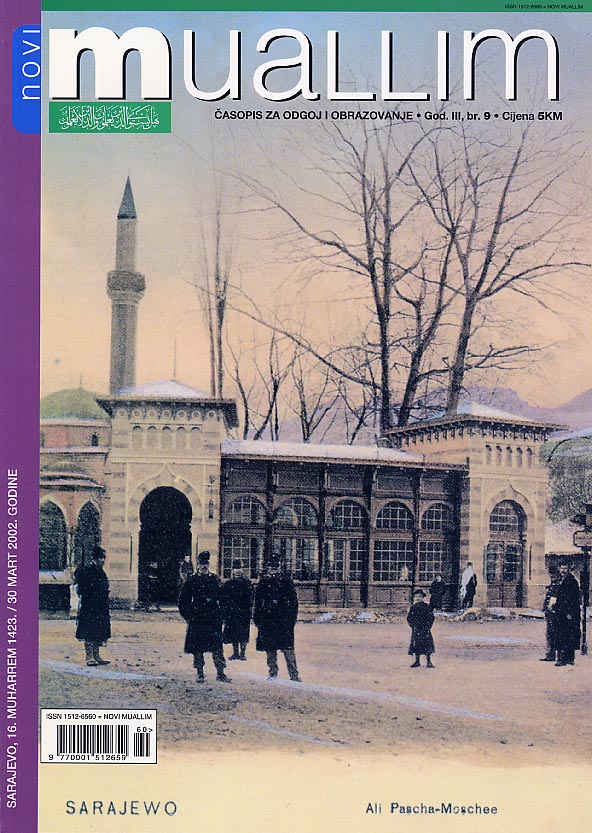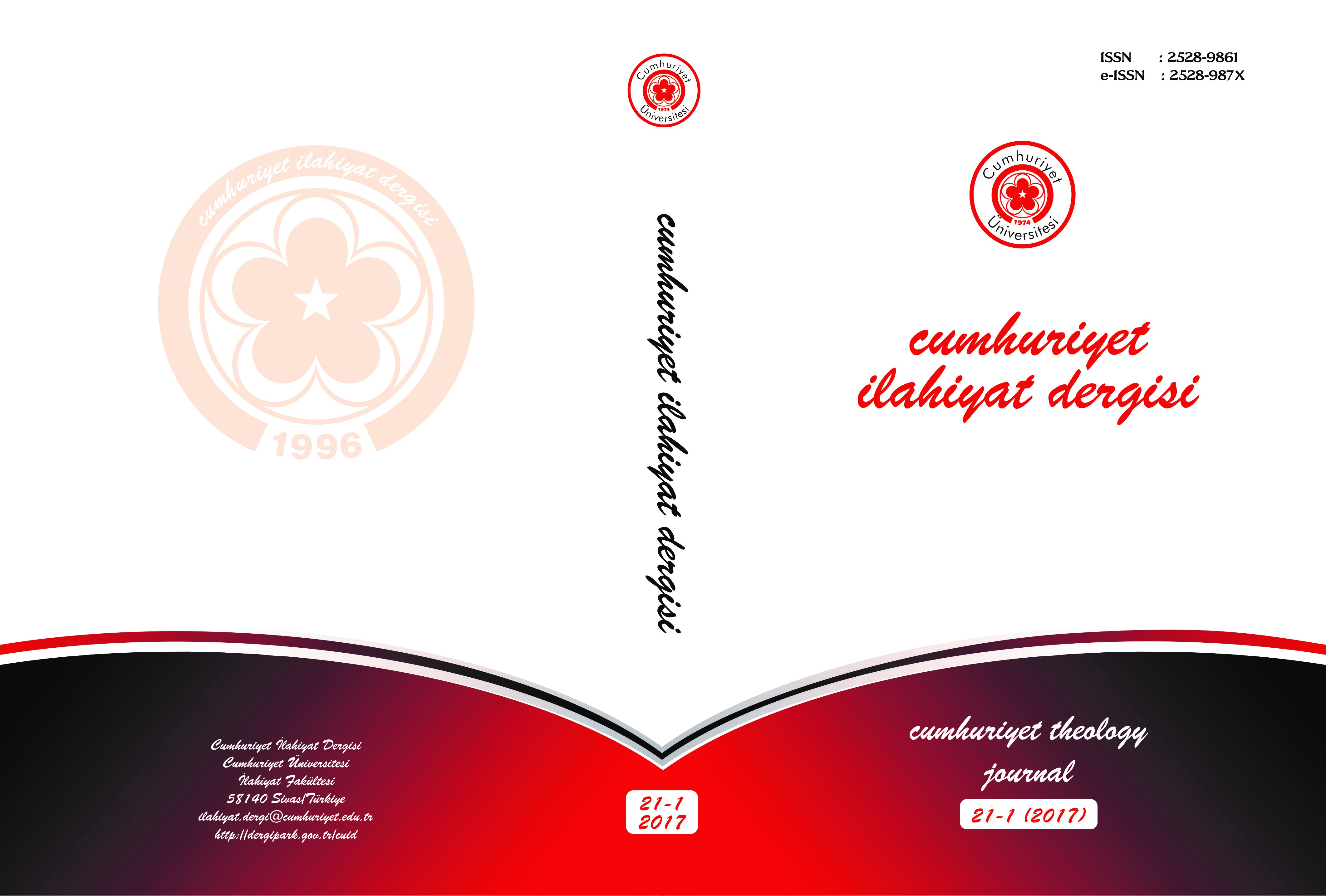
Şâh Velî Ayıntâbî’nin el-Kevâkibü’l-Muzî’e fi’t-Tarîkati’l-Muhammediyye Adlı Risâlesi ve Tahlili: Üç Hadis Üç Hakikat
This article studies the treatise titled as al-Kavākib al-Mużī’a fī at-Ṭarīqat al-Muḥammadiyya by Khalvatī poet and sufi Shāh Walī ʿAynṭābī. The treatise is about a mystical interpretation of three hadiths that the writer claims these hadiths were written in the letter delivered to him by the Prophet when he was in the state of consciousness (yaqaẓa). The mentioned hadiths respectively are directly related to Uways al-Qaranī, Hażrat Abū Bakr and Hażrat ʿAlī, there are also many mystical principles and notions dealt with in the treatise. The introduction gives precise information on the writer and his works. The first part of the article discusses the reasons why the treatise was written, its subject and content and then there is an mystical analysis of the treatise in this part. The second part of the article includes the transliterated text.Shāh Walī ʿAynṭābī, who was a member of Jamaliyya branch of Khalwatiyya order accepted as one of the most common order not just in Anatolia but also in Islamic geography, is a sufi poet. Shāh Walī ʿAynṭābī is also a Khalwatī sheikh who had a positive influence on the social life of Gaziantep in XVI. century and after. He experienced most of his academic and mystical activities in Gaziantep where he lived besides he had opportunities to spread his mystical ideas in Halab (Aleppo), and he also lived in Damascus and Jerussalem where were the significant centers for a short period of time. Shāh Walī ʿAynṭābī produced six religious and mystical works besides his academic and guidance activities.One of the mystical prose works that Shāh Walī ʿAynṭābī wrote according to Khalwatiyya principles is a treatise titled as al-Kavākib al-Mużī’a fī at-Ṭarīqat al-Muḥammadiyya. This article studies this treatise. The treatise is about a mystical interpretation of three hadiths which the writer claims that these hadiths were written in the letter delivered to him by the Prophet Muhammed when he was in the state of conciousness. The work has fourteen folios and it is written in Turkish and partly in Arabic. As far as is known there is no study on this treatise which is in the same manuscript together with Risālatu’l-Badriyya and “Gelsün” ode (with rhyme). There is only one manuscript of the treatise and there is no other recorded or known copy of this until now. Language, style, expression, characteristics and mystical symbols used in the work show the characteristic features of sufi literature.It is known that the writers of Khalwatiyya order produced some of their works based on the dreams they had. As Shāh Walī ʿAynṭābī was a member of Khalwatiyya order he produced the mentioned treatise when he was in the state of conciousness. In this state he dreamed three hadiths and the treatise is related to the interpretation of these hadiths. The three hadiths mentioned in the treatise point out mystical truths and these were grouped into three different parts by the writer. Thus the work we refer as three hadiths three truths titled as al-Kavākib al-Mużī’a fī at-Ṭarīqat al-Muḥammadiyya includes the detailed interpretation of these hadiths in three different chapters. The chapters in the work are “al-bişārat al-ûlā”, “al-bişārat al-sānîyetu” and “al-bişārat al-sālisetu”. The mentioned hadiths respectively are directly related to Uwais al-Qaranī, Abū Bakr, and ʿAlī. There are also many mystical principles and notions dealt with in the treatise. The first chapter of the treatise is related to Uwais al-Qaranī, who is one of the personalities of sufism, and his spiritual superiorities. In this chapter the writer gives information on Uwais al-Qaranī’s patience and submission by emphasizing his devotion to the Prophet Muḥammed according to mystical principles. One of the possible reasons why he mentions Uwais in this chapter is that when he dreamed the Prophet Muḥammed in conscious, he was thought that he appears before the Prophet Muhammed by favor of him (Uwais). It can be better understood that the reason why Uwais is mentioned in this kind of mystical work is that it is believed that Uwais is educated the Prophet Muḥammed through dreams and other ways. That the the Prophet Muḥammad sent his hirka (the dervish coat) to him by favor of ʿUmar and ʿAlī, shows the value of Uwais in the sight of the Prophet Muḥammad. The second chapter of the treatise tells that Abū Bakr spent all of his wealth for Islam and how he becomes one of the member of mukarrab (these will be those nearest to Allah) by his model behavior. In the second chapter comparing the two terms benefactor and closeness also it is also stated that Abū Bakr preferred poverty in terms of both spiritually and materiality. In sufism the term faqr expressed as abandoning the property and ego for pleasing Allah is identified with Abū Bakr and this is presented as a model behavior. The third chapter is based on the hadith related to ʿAlī. This chapter is about that ʿAlī had no objection to the election of caliphate and he did not support the dissents on this issue by conducting paternity suit. In this chapter the writer compares the prophethood and walāya (friendship) positions and then he tries to inform the superiority of ʿAlī in terms of his closeness to Allah according to mystical principles.In the introduction part of our study which is about Shāh Walī ʿAynṭābī’s treatise interpreting the three hadiths by referring to different perspectives on the basis of sufism, the life of the writer, his works and his order are explained shortly. The first chapter includes the mystical analysis of the treatise and it gives information on why was the treatise written, its subject and content. The second chapter has the transliterated text. Some of the order chains are based on the Prophet Muḥammad through Abū Bakr or ʿAlī. Shāh Walī like other writers presented Abū Bakr and ʿAlī as good examples for their spiritual positions and being models for others. Again, the treatise mentions that Uwais al-Qaranī had a distinguished place as he was educated by the Prophet Muḥammad through spiritual ways and dreams. Thus, spiritual superiorities such as faith, loyalty, and submission are told by making use of Uwais al-Qaranī’s example as he did not see the Prophet Muḥammad in person but he showed his submission and devotion to the Prophet Muḥammad by trying to live according to the Prophet Muḥammad’s teaching. This is significant in terms of showing the role of Uwais al-Qaranī in sufi education. One of the significant issue in the treatise is that ʿAlī did not object to the caliphate election and he obeyed the ordering. It is possible to argue that the writer discusses the caliphate disputes in a different way according to mystical principles by repeating that ʿAlī did not create a problem over caliphate. By emphasizing that ʿAlī did not participate the caliphate discussions by not arguing ancestry rights and he obeyed the legitimate caliphate, the writer argued that sheikh or murshids cannot be determined according to ancestry. In this context by addressing the murshids of the order in the final part of his treatise, the writer suggests that the sheikhs and murshids must follow virtue and abandon ancestry discussions. In the treatise it is explained that prominence and superiority do not depend on ancestry but it depends on taqwā (piety). This ideal is supported by hadiths and verses from the Qurʾān in the treatise. The treatise features XVI. century Turkish characteristics and includes many mystical terms such as risālāt, walāyāt, abrār, mukarrab, fakr thus this may help researchers who would like to do detailed study on these issues.
More...
